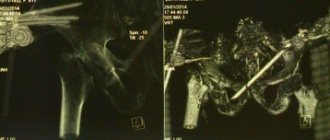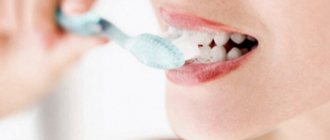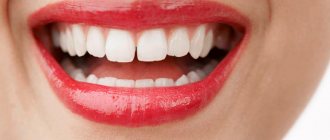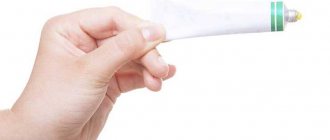The terms "dermatitis" and "eczema" are synonymous. The term eczema is usually applied to the dermatitis seen in atopic individuals. The term "dermatitis" means inflammation of the skin. It can be acute with weeping, formation of crusts and vesicles, subacute or chronic with dryness, peeling and cracks.
Skin rashes are almost always itchy and are usually complicated by secondary infection.
Dermatitis can be exogenous (eg, contact, irritant, infectious or photodermatitis) or endogenous (eg, atopic, seborrheic, discoid).
Most often, the diagnosis is made on the basis of a detailed history and morphological studies of skin rashes, taking into account the characteristics of their distribution.
Perioral dermatitis
Perioral dermatitis on the face is a disease that affects the skin.
It appears in the form of small pimples that form in the area of the lips and mouth. It is accompanied by unpleasant itching, redness and negative consequences, which can be eliminated through a medical examination and properly selected treatment. In each specific situation, based on the results of the consultation, doctors recommend the patient medications that are relevant to his case. These include specialized pastes, ointments, sometimes hormonal drugs, as well as therapy that quickly eliminates burning and other symptoms. For perioral dermatitis, medications (ointment, tablets, cream) are selected based on medical diagnosis and tests. You can purchase the necessary medications for treatment on our website “Pharmacy 911”.
Rating of the best remedies for atopic dermatitis
To treat atopic dermatitis, use special children's products recommended by a dermatologist. During exacerbations, medications are prescribed for oral administration, application to atopic areas and general body care:
- preparations for removing allergens from the body - Enterosgel, Lactrofiltrum, Enterodes;
- skin softening products – Atopic cream for daily care;
- drugs that relieve itching - Panthenol spray;
- bathing products - soft shower gels for atopic dermatitis should be purchased at the pharmacy: dermatologists recommend using Atopic bathing gel from head to toe.
Causes of perioral dermatitis
Various factors become prerequisites for the occurrence of the disease. It is generally accepted that the disease can occur in waves, during which the irritation on the skin passes and reappears. Doctors often identify hormonal changes as the cause of perioral dermatitis. Symptoms appear as a result of:
- the use of drugs based on corticosteroids, which provoke the occurrence of rosacea, acne, blackheads and other cosmetic problems
- pregnancy, when the body is at the stage of serious changes and hormonal changes. Dermatitis often worsens before the onset of menstruation.
- using inappropriate decorative cosmetics
- the use of pastes with fluoride, which provoke irritation of the epidermis
- chapping after walking in the cold or sunbathing
- infectious diseases
- problems with immunity. They are usually caused by not getting enough vitamins.
Having discovered a corresponding problem, it is better to immediately go to see a doctor and find out how to treat perioral dermatitis on the face in adults.
What can you do yourself?
To restore damaged hand skin, you need to follow a number of simple rules:
- wear gloves in cold weather;
- Use warm water and a little mild detergent to wash your hands;
- rinse off the soap well and dry your hands;
- often (at least every time after washing your hands) use moisturizing and skin softening products, as well as those that prevent skin dehydration. These are usually creams with petroleum jelly, lanolin, glycerin, ceramides, dimethicone, propylene glycol, urea, etc.
It is recommended to relieve inflammation with the help of corticosteroids (in the form of cream, lotion, foam or, better yet, ointment). If the dermatitis is severe or chronic, with noticeable thickening of the skin and is not on the face or in the area of skin folds, then clobetasol, diflucortolone, etc. are used for 2-4 weeks. In less severe cases, betamethasone, diflucortolone, mometasone, triamcinolone, etc. are used (also for 2–4 weeks). When dermatitis is on the face or in the area of skin folds, weaker corticosteroids or corticosteroids in lower dosages are used: triamcinolone, betamethasone, hydrocortisone, etc. for 1–2 weeks.
It is highly advisable not to scratch the sore spot, otherwise additional damage to the skin may create a suitable environment for bacterial infection.
After a case of acute dermatitis, recovery takes about a month if there is no further exposure to the irritating agent. With chronic contact dermatitis, symptoms may not go away for months or years.
For allergic contact dermatitis, the most important thing is to avoid the substance that caused the disease and relieve inflammation. The methods are approximately the same: wear gloves, overalls, a mask and goggles, use corticosteroids for 1-2 weeks (in severe cases it is better to take systemic drugs, that is, in tablets) or calcineurin inhibitors (for example, pimecrolimus cream).
Symptoms of the disease
The first sign that you need to undergo an examination is the appearance of small blisters (papules) in the mouth and chin. In severe cases, they can spread throughout the face, reaching the cheeks, nose, eyes and temples. Papules are filled with clear liquid. Color varies from flesh-colored to pink to bright red depending on the stage of the disease. Pimples appear singly or in groups. The skin in these areas becomes rough. Bursting, papules form crusts. If you accidentally touch one, pigmentation will eventually remain on the skin.
Patients do not always experience serious pain. The sooner treatment of perioral dermatitis on the face in children and adults begins, the easier it is to get rid of the disease, and the lower the risk of unpleasant consequences. When you notice the first symptoms of the disease, make an appointment with a dermatologist.
Manifestations and types of contact dermatitis
For irritant contact dermatitis to occur, a single exposure to the agent may be sufficient. Then the disease is called acute , redness of the skin occurs, often swelling, blisters, and the affected area becomes moist. All this is accompanied by burning, pain and often itching.
Chronic is more common - when there is prolonged contact with a substance that has a mild irritant effect. Then the skin becomes dry, red, flaky, thicker and cracks.
With irritant contact dermatitis, problems most often occur on the back of the hand and the skin between the fingers. But sometimes even areas covered by clothing, such as the genitals, are affected.
With allergic contact dermatitis, the boundaries of redness can be blurred, several areas are affected at once: eyelids, lips, etc. Pain and burning occur infrequently, but there is almost always itching. Visually, allergic and irritant contact dermatitis are quite similar.
If you suspect contact dermatitis, your doctor will first ask you about the specifics of your work (especially if you are undergoing a medical examination), as well as when your symptoms began and what you attribute to their worsening. Therefore, it is better to prepare and try to answer these questions for yourself before visiting the doctor. The doctor will also be interested in whether you have already had dermatitis and allergic diseases.
Risk groups and similar diseases
Signs of the disease are most often found in women, but children and adolescents periodically experience them due to weakened immunity. In place of the blisters, ulcers often form. When spread over the entire face, it becomes a threat to vision, which is especially important in the situation with children. Therefore, when checking with a specialized doctor about how to treat perioral dermatitis in children, it is worth paying a visit to an ophthalmologist.
In the case of teenagers, the disease may not be detected immediately, because, experiencing hormonal changes, boys and girls often encounter skin problems. Blackheads and acne affect most people, so it can be difficult to notice papules at an early stage. Patients prone to allergies also rarely accurately diagnose the disease. Perioral dermatitis in children is often attributed to hormonal imbalance.
Diagnosis of perioral dermatitis
Having noticed the first signs of the disease, having felt unpleasant symptoms, you need to make an appointment with a specialized specialist. The initial appointment with a doctor consists of an examination, a description of the medical history based on the patient’s complaints and information about the individual characteristics of his body and possible reactions.
Before treating perioral dermatitis, tests are one of the mandatory procedures. They allow you to identify the prerequisites for the development of the disease and accurately diagnose it, without confusing it with herpes, rosacea and other skin lesions. You will need:
- Dermatoscopy. Gives an assessment of the epidermis and helps assess the course of the disease
- Scrapings. Determine the infectious nature if the symptoms have a corresponding origin
- Allergy tests. Demonstrate the level of skin sensitivity to staphylococcus and streptococcus
As a result of the examination, the doctor explains to the patient how to cure perioral dermatitis, clinical recommendations are entered into the disease record. A course of medications and therapy is prescribed.
Treatment of perioral dermatitis
A confirmed diagnosis usually requires an integrated approach. The treatment regimen involves a complete refusal of cosmetics, as well as corticosteroid drugs. The patient is advised to use antihistamines to relieve burning and itching. Herbal lotions are used to help reduce inflammation. Reflexology is used to stop symptoms by pressing on specific points or placing special needles.
Having weakened the symptoms, you can resort to the use of antibiotics to get rid of the infection if it is diagnosed during the examination. For perioral dermatitis, medications are prescribed by a doctor taking into account age, body characteristics, allergies and pregnancy. Strengthening the immune system and restoring the balance of intestinal microflora are important. The latter may require a specific diet. Avoid fried, spicy and fatty foods, snacks, sweets and fast food. Give up alcohol and cigarettes.
Prevention
Treatment with ointment for perioral dermatitis is not always a panacea. In some cases, the disease can return, so the course of taking medications can be long. Any irritant often leads to the appearance of the disease. Following simple recommendations will help you avoid possible risks:
- Check the composition of cosmetic products and treat their choice with special attention
- Don't neglect personal hygiene
- Strengthen your immunity
- Eat right and monitor your digestive health
- Be aware of allergies
- Monitor hormonal balance during pregnancy, in case of possible changes due to nervousness, illness or other reasons
Perioral dermatitis detected at the first stage is the easiest and fastest to treat, so remain sensitive to the body’s signals and begin the fight against the first symptoms of the disease in a timely manner.
Mechanism of disease development
An allergen is any substance that can cause an allergic reaction in a susceptible person. Almost anything can act as such a substance: from chemical compounds to food products. As a rule, at the first contact it takes at least two weeks for a specific reaction to occur. And it can be difficult for patients to associate the first symptoms of the disease with any specific irritant.
If sensitivity has already manifested itself, it means that the reaction occurs more and more quickly, and the symptoms increase. This phenomenon is called sensitization: the more and longer the allergen affects the body, the faster and more pronounced the response appears. In case of repeated contact, the rate of development of symptoms is reduced from several hours to three days.
In order for this disease to begin to develop, prolonged contact of the allergen with open skin is required. Currently, scientists name several thousand substances that can cause allergic dermatitis. And their number is increasing every year.
Bibliography
- Adaskevich V.P. Perioral dermatitis: clinical picture, diagnosis, treatment / V.P. Adaskevich // Dermatology. – 2008. – No. 1. – P. 17–20.
- Grashkin V. A. Diagnostic criteria, epidemiology and substantiation of clinical and pathogenetic types of perioral dermatitis / V. A. Grashkin, M. S. Gromov // Voenmed. magazine – 2010. – No. 10. – P. 32–45.
- Rodionov A. N. Dermatocosmetology. Lesions of the facial skin and mucous membranes. Diagnostics, treatment, prevention / A. N. Rodionov. – St. Petersburg. : Science and technology, 2011. – 912 p.
- Karelina O. Yu. Perioral dermatitis: treatment with azelaic acid / O. Yu. Karelina, Yu. M. Karelin // Klin. dermatology and venereology. – 2006.
Popular questions about perioral dermatitis
How can you get perioral dermatitis?
Dermatitis is not contagious, as it is an individual reaction of the body to the use of fluoride-containing pastes, inappropriate cosmetics and drugs containing corticosteroids. In the case of diagnosing infectious preconditions for a disease, it is worth finding out its nature, but it will not become a reason to limit communication.
How does perioral dermatitis manifest?
The disease is characterized by the formation of papules, blisters filled with colorless liquid, which spread around the mouth and along the chin, rising to the eyes. Dry skin, itching and burning accompany the disease, but in the first stage patients experience minimal discomfort.
Is it possible to cure perioral dermatitis?
The disease is easily treatable if you follow your doctor’s recommendations, use the necessary medications and avoid products and products that can cause perioral dermatitis. Depending on the extent of the damage, the course can take from several days to several months.
What to feed a child with atopic dermatitis
In order not to provoke an exacerbation of dermatitis, to relieve itching and redness of the skin, you need to follow a diet. Foods that burden the immune system are excluded from the children's diet: citrus fruits, chocolate, eggs, honey, seafood. Red (strawberries, cherries, currants, apples) and exotic (mangoes, coconuts, pineapples) fruits are dangerous.
Split meals are recommended: small portions every 3-4 hours. It is better to boil, stew, bake, but not fry. Do not use spices, black pepper. The diet should be balanced and contain enough protein, vitamins, and microelements.
Avoid giving your child sugary carbonated drinks, chips, crackers and other snacks for as long as possible. If the infant is receiving breast milk, introduce new foods carefully. Add the product once a week to make sure it doesn't cause breakouts. After meals and between meals, offer your baby clean boiled water.









